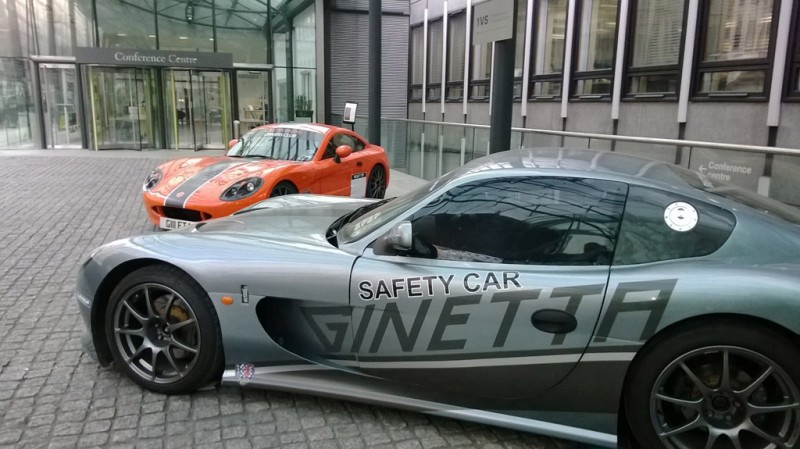In 2008, there were few credible electric cars on the market. Instead, it was a time when public interest was more focussed on ever more powerful supercars and motorway bashing super saloons. If it didn’t have a ‘super’ in front of it, then it wasn’t in vogue. There were a growing number of people interested in EVs, but many more sceptics. Hybrids were at the brunt of many jokes, despite their obvious benefits and ability to convert many people after their first test drive in one.
Enter a traditional British company by the name of Ginetta, who have, since the 1960’s been… let’s be kind… ‘relaxed’ in development of new models, instead gently altering or modifying existing designs over decades. But, that was the misconception and not what Ginetta wanted. The solution to change attitudes was obvious; create a new and exciting model that would attract marque attention and grab headlines.
In 2008, Ginetta revealed to the world a new ground breaking vehicle and not just any automobile, an electric vehicle. You have to consider that as a bold move for a small company that had been bashing out examples of their [admittedly very pretty and capable] sports cars for many years. Likewise, the electric car market was not full of Nissan LEAFs or general acceptance that they were a good thing. Nor were they accepted by any of the motoring press, instead most brandished them as nothing more than inflated radio controlled cars with little to offer the average motorist.
However, Ginetta managed to do something special. The new car boasted an exceptional range, even by today’s standards, of 250 miles and a top speed of 120mph. Coupled with rapid acceleration, the Ginetta G50EV seemed a worthy and credible answer to the electric car sceptics and the million dollar question; was electric power a viable alternative to internal combustion in a vehicle?
The answer was clearly ‘yes’ and so much so that on 18th November 2009, Ginetta and the operators of the Channel Tunnel, Eurotunnel, got together to mark an occasion. The 15th birthday of the Channel Tunnel was looming and the idea was simple; to drive a car through the 31 mile long tunnel. Not content with that as an idea in itself, they employed the driving ability of the legendary racing driver John Surtees OBE (to this day, the only man to have won world championships both on two and four wheels). The G50EV easily travelled the passage of the Channel Tunnel and was entered into the history books as the first car ever to do so. Upon exiting the tunnel at Coquelles, France, Surtees said:
“You certainly wouldn’t want to be subject to any claustrophobic feelings down there.The tunnel is very small in parts. The drive was unique. It was the first time for me, and the first time it’s actually been carried out. To come through in an electric car was another first.”
After that historic event, the Ginetta G50EV appeared at the 2010 Le Mans, leading the ‘Grande Parade des Pilotes’ to the onlooking eyes of a 150,000 strong crowd. Following that event, the G50EV participated in the Eco-Rally 2010 where it was driven, by another celebrity, rock star Rick Parfitt Jnr.
Unfortunately, after the Eco-Rally, the Ginetta G50EV seemed to fade into history without another moment of glory. Merely a research project, despite having achieved historic status during it’s short life. The range it offered is similar to that of a much newer, larger and heavier Tesla Model S (albeit it has more seats too), yet the Ginetta was able to offer that kind of range years earlier. Likewise, it’s electric powertrain used top of the range brushless DC motors – something that is still unusual today, with most manufacturers opting for higher voltage three-phase AC motors instead.
The award winning innovative drive train design integrated the electric motor, power and control electronics into one compact assembly with only three connections: water, high voltage (300V) and low voltage (12v). There were three batteries, all Lithium based and used an interesting vacuum sealed steel container to house the cells. All in all, the car was a showcase not only for Ginetta, but also for electric cars and British engineering capability. After all, the car was produced by a small research and development team on a tight budget.
Two Ginetta sports cars can be seen outside the Department for Business, Innovation and Skills; 1 Victoria St, London SW1H 0ET; where there is currently a signboard about the all electric G50EV.

